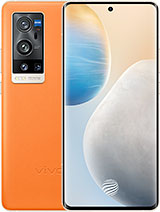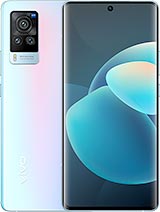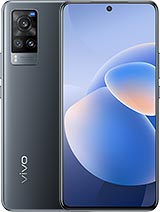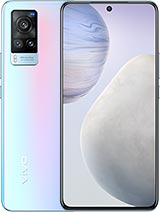The VIVO X60 PRO+ Goes against a REAL camera By DIYPhotography
This week VIVO announced the international version of their x60 series, including the x60 pro plus, and while pricing isn't known yet in the west, it is selling for around 5099 RMB in China, which is about 920. So I would guesstimate around 1 000 when the prices come in. All the press materials boast about the camera capabilities, so naturally I saw this, and the first thing I said to myself is: I need to compare it to a camera, but, like a camera I mean a few is back. You would have said that this is an apple to oranges. Comparison, not that fruits can't be compared, but you can definitely buy a decent mirrorless for the same price of the VIVO v60 pro plus, roughly one thousand dollars, VIVO collaborated with mass on the camera systems in this phone, so you get four rear cameras and one selfie camera with mass. In the picture.
We have high expectations from this phone and at least on paper it looks very promising. The main camera is an optically stabilized, 50 megapixel camera with a focal length of 35 millimeters at f 1.6. There is a wide angle: 14 millimeter, 48, megapixel, gimbals, assisted camera at f 2.2. Then there are two smaller cameras: a 32 megapixel portrait camera at 46, millimeter and f 1.6, and an 8 megapixel periscope camera at 115. Millimeters.
Consider this a 5x optical zoom lens. The last camera is the selfie camera, and it's a 32 megapixel camera at 24 millimeters with an aperture of f 2.4. Since this is such an impressive setup, I thought I'd. Take it outside and see how it compares with a modern mirrorless camera the Sony a7iii. To make this a fair fight.
We are not going to use any fancy gear, just a standard, mass, 2470, f4 lens, so mass versus size. This is fair right now. This is in the tech review channel and plenty of people have already dug into the specs of the phone like technic, which I'll link to here. But I do want to talk about the ergonomics, because, when you're shooting it can make a difference, the phone fits nicely to my hands, but maybe a bit too big for smaller hands. On the back.
You will find the lens array in a rectangular bevel. The good thing about this arrangement is that it's hard to accidentally touch the lens and leave fingerprints. The bad thing is that the phone never lies flat on its back. Well, I don't know how much to really care about this, though. Basically every flagship phone today has a big bushy.
As with most phones, you can take picture with the volume buttons, but I found the volume rocker sit too far down to be comfortable for shooting. The placement makes perfect sense as volume rockers, but as shutter button. No, not so much. Okay. With this out of the way, let's head out and test this bad boy for our first test, I just took some photos in bright daylight settings.
I did this at the hi-res circa 50 megapixel resolution, which is about twice as much as the Sony a7 iii at 24 megapixels. Let's look at the photos, both the Sony and the VIVO performed really well against the bright background. The colors are vivid and they both hold a nice dynamic range. This is actually quite impressive for a phone. If you look at the top of the tree, though, both the Sony and the VIVO display some purple fringing, but with the Sony, this is easily corrected in Lightroom.
Looking into the jacket on the left, you can see that it has some more details and a more subtle contrast, but this is to be expected from a full frame camera. I am really impressed with the resolving power of the VIVO when taking a standard photo. You can also opt for pro mode, which gives you control over ISO shutter, speed and white balance. It also enables row shooting, but you have to use the full sensor's 3x4 ratio. The file is kept in ROG format, and you can tweak the standard settings in adobe photoshop.
Sadly, though, you cannot take a 50 megapixel raw. I also want to test the camera with some portraits, and thus I did in portrait mode which allows you to use 35 or 23 millimeter lenses. The portrait mode does have some nice features and impressive eye tracking you'll even track the closer eye to make sure that the portrait is sharp, or it should be. I did use the both mode on some portraits now. Let's compare these apples and oranges compared to the Sony.
We see that both cameras show a decent both and pretty good on subject sharpness, but if you unleash the VIVO computer as both, it becomes very impressive. The both looks like actual circular both and not just a blurred background then comes the periscope camera, and you can zoom all the way to 115 millimeters. This is an actual optical zoom, with the lens array built vertically into the body of the phone. You see the front element, but the rest of the lenses are tucked away under the back of the phone. The closest we can get with the Sony is 70 millimeters, but cropping the images get us pretty close to the same framing.
So let's compare those two portraits. According to Vito, the lenses are coated with mass secret sauce t-star coating. Let's compare a photo taking with the Sony and VIVO against some harsh lighting conditions. What can I say I'm impressed with the Vito, even though it does not hold against the Sony. There are clearly more details than I would have expected from a phone.
Some details are blown out like the building in the back. But if you look at the reflections on the floor, it actually preserves most of the texture. The highlights bloom more on the Vito, but that's not necessarily a bad thing. If you're shooting portraits it smoother out the skin and has more of a vintage feeling to it, next up is low-light for shooting, regular low-light images. The VIVO is okay, not DSLR, okay, but it's okay, the magic happens when you shoot cityscapes or stars.
Even on a cloudy night, the VIVO outperformed the Sony at f4. It takes a series of images and stacks them. Together it accounts for star rotation and even cloud movement to create a pretty impressive photo. It could even find stars that we were not able to see with our naked eyes back in the studio. We wanted to compare the phone's macro capabilities with a real macro lens, the law 100 macro.
You can check out that review up top, and I'll leave it in the description below as well. I was blown away. This little phone gives a macro lens, a run for its money. It gets insanely close and looks awesome. Let's talk about the video one of the most attractive features about the video here is that the VIVO is capable of shooting 8k videos.
While the resolution here is impressive, the quality of 8k is nothing to write home about. It feels more like a marketing gimmick than something you would actually use. I'm not really sure, though, what situation would demand shooting 8k with your phone? Let's talk, slo-mo the Sony takes the lead here. The VIVO does shoot decently, slow down videos, but there's some form of compression going on, and it looks far less impressive than the regular video. This is very noticeable when you compare the slow motion footage to the Sony filming at 100 fps at 100 megabits.
The VIVO is also capable of shooting, with the newer h.265 codec, which saves about half the size of the file. Here are two 10 seconds: videos with each of the codecs. The VIVO only comes with 128 or 256 gigs of internal memory, so small file sizes do have their advantages. An interesting feature for the VIVO is that it has a built-in gimbals on the wide-angle camera. The Sony, on the other hand, has an internal ibis.
Let's see how the two compare for a short walking video. The stabilization on the VIVO knocks the Sony right out of the park for the more technical among you. I also compared the rolling shutter effect or the jello effect on both cameras. What can I say? The VIVO is a phone and the Sony has never been known for controlling rolling shutter. Lastly, I wanted to check the video under low light.
Here is what you got with the Sony at 1080. When you compare it to the Vito. Well, to be honest, this isn't really a fair comparison. Sony is known for its low light capabilities, and we're shooting this at ISO 8000. I would say that the VIVO is okay for sharing with the family, but not really usable beyond that.
It's not surprising that the Sony is outperforming the Vito. It is more expensive and, let's be honest, it's a device built specifically for photography. The most surprising thing here is actually that the VIVO is even in the running or at a point in time when it actually makes sense to take a phone and a camera and expect the phone to even compete, and the best thing about the VIVO is that it's small enough to fit in your pocket. So that's it. If you like this video share like and subscribe, I'm Audi kibosh from photography.
net, and I'll be seeing you around. Yes,.
Source : DIYPhotography




























